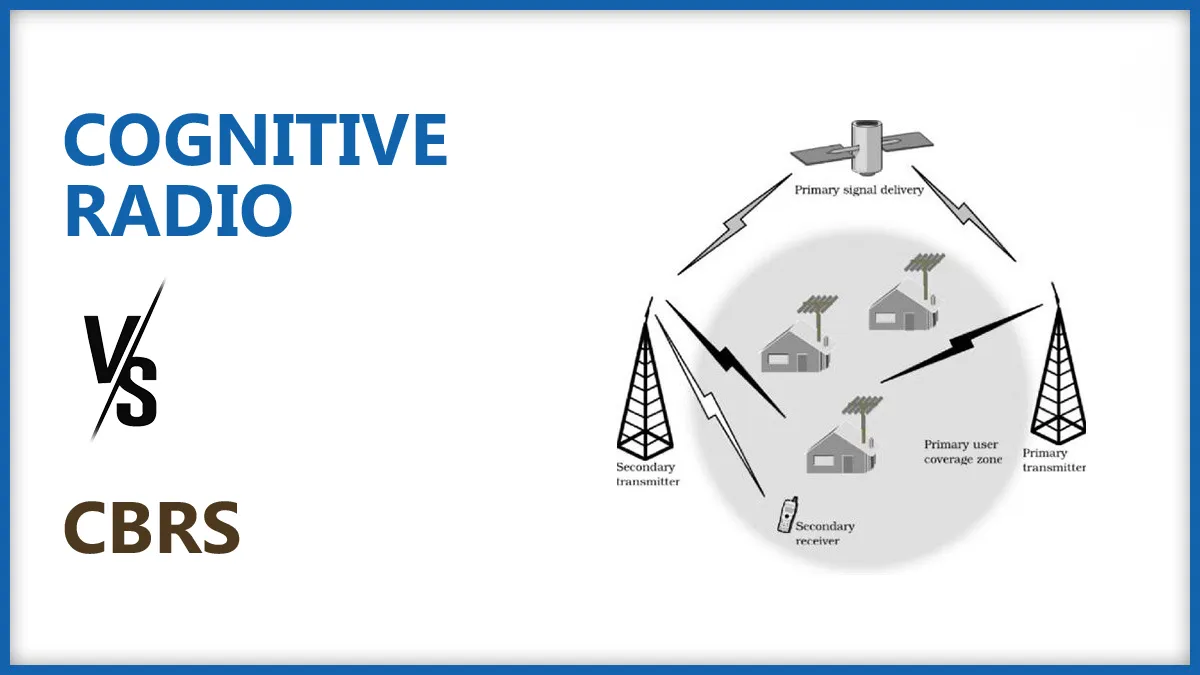Cognitive Radio vs CBRS: A Comprehensive Analysis of Spectrum Management Technologies
In the dynamic landscape of wireless communications, efficient spectrum management is crucial to meet the ever-growing demand for bandwidth and connectivity. Cognitive Radio (CR) and Citizens Broadband Radio Service (CBRS) represent two distinct approaches to address this challenge. This article provides an in-depth analysis of Cognitive Radio and CBRS, exploring their definitions, key features, and the advantages and disadvantages of each technology.

I. Understanding Cognitive Radio
Cognitive Radio Overview
Cognitive Radio is a revolutionary technology designed to enhance spectrum utilization by allowing devices to intelligently adapt to changing radio frequency conditions. The key principle behind cognitive radio is to enable dynamic and opportunistic access to available spectrum, optimizing its use without causing interference to licensed users.
Spectrum Sensing and Adaptation
One of the primary features of cognitive radio is spectrum sensing, where devices can detect and identify unused frequencies, commonly known as white spaces. This enables cognitive radios to dynamically adjust their transmission and reception parameters, such as frequency, power, and modulation schemes, based on real-time environmental conditions.
Advantages of Cognitive Radio
– Optimized Spectrum Utilization: Cognitive radios can exploit underutilized spectrum, maximizing efficiency and reducing spectrum congestion.
– Interference Mitigation: By constantly monitoring the spectrum, cognitive radios can avoid interference with licensed users, ensuring a more reliable and interference-free communication environment.
Challenges and Disadvantages
– Complexity: Implementing cognitive radio systems involves sophisticated algorithms and protocols, increasing the overall complexity of the technology.
– Regulatory Hurdles: Adapting to regulatory frameworks that traditionally allocate spectrum to specific users poses challenges for widespread cognitive radio deployment.
II. Unraveling Citizens Broadband Radio Service (CBRS)
CBRS Regulatory Framework
Citizens Broadband Radio Service is a regulatory framework in the United States that designates a portion of the 3.5 GHz spectrum for shared use between incumbent users, such as government radar systems, and new commercial users. CBRS employs dynamic spectrum access principles to allow multiple users to dynamically access and share the same frequencies.
Spectrum Sharing Tiers
CBRS is structured into three tiers: incumbent access, priority access, and general authorized access. Incumbents have the highest priority, followed by users with priority access licenses, and finally, general authorized access users, who operate in the remaining available spectrum.
Spectrum Access System (SAS)
To manage and coordinate access to the spectrum, CBRS relies on a Spectrum Access System. SAS dynamically allocates frequencies, ensuring that incumbent users are protected from harmful interference while facilitating shared use among priority and general access users.
Advantages of CBRS
– Efficient Spectrum Sharing: CBRS enables multiple entities to share the 3.5 GHz spectrum dynamically, promoting efficient use without causing interference to incumbent users.
– Increased Spectrum Availability: The dynamic spectrum access model increases the availability of spectrum for commercial use, fostering innovation and competition.
Challenges and Disadvantages
– Limited Spectrum Range: The CBRS framework focuses on a specific spectrum band (3.5 GHz), limiting its impact on addressing spectrum scarcity in other frequency bands.
– SAS Complexity: Implementing and managing a Spectrum Access System adds complexity to the CBRS ecosystem, requiring robust coordination among various stakeholders.
III. Comparative Analysis
1. Spectrum Utilization
– Cognitive Radio: Offers a more holistic approach to spectrum utilization by adapting to various frequency bands, including underutilized and dynamically changing ones.
– CBRS: Primarily addresses spectrum sharing in the 3.5 GHz band, offering targeted relief in specific frequency ranges.
2. Adaptability and Flexibility
– Cognitive Radio: Excels in adaptability, adjusting to real-time conditions in a broader spectrum range.
– CBRS: Demonstrates adaptability within the confines of the designated 3.5 GHz band, providing flexibility within this specific range.
3. Regulatory Considerations
– Cognitive Radio: Faces challenges in adapting to traditional regulatory frameworks, requiring regulatory bodies to accommodate dynamic spectrum access principles.
– CBRS: Operates within an established regulatory framework, simplifying compliance but limiting its application to specific bands.
4. Complexity
– Cognitive Radio: Inherently complex due to the need for advanced algorithms and protocols for dynamic spectrum access.
– CBRS: Complexities arise from the implementation and management of the Spectrum Access System.
IV. Future Implications and Concluding Remarks
Cognitive Radio Evolution
As technology advances and regulatory frameworks evolve, cognitive radio may find broader applications, especially as regulatory bodies become more receptive to dynamic spectrum access principles. The adaptability of cognitive radio to diverse frequency bands positions it as a potential solution to address the growing demand for spectrum.
CBRS Integration
CBRS, while focused on a specific frequency band, serves as a practical model for spectrum sharing within well-defined regulatory boundaries. As the demand for spectrum continues to rise, the CBRS framework may inspire similar initiatives in other frequency bands, contributing to more efficient spectrum utilization.
Conclusion
In the pursuit of efficient spectrum management, both Cognitive Radio and CBRS present unique approaches and solutions. Cognitive Radio, with its adaptive and opportunistic spectrum access principles, aims for a broader impact across various frequency bands. In contrast, CBRS, operating within a designated spectrum range, focuses on targeted relief within specific frequencies. The choice between these technologies depends on the specific needs of the application, regulatory considerations, and the evolving landscape of wireless communications. As technology continues to advance, a synergistic integration of these approaches may pave the way for a more comprehensive and effective spectrum management paradigm.








